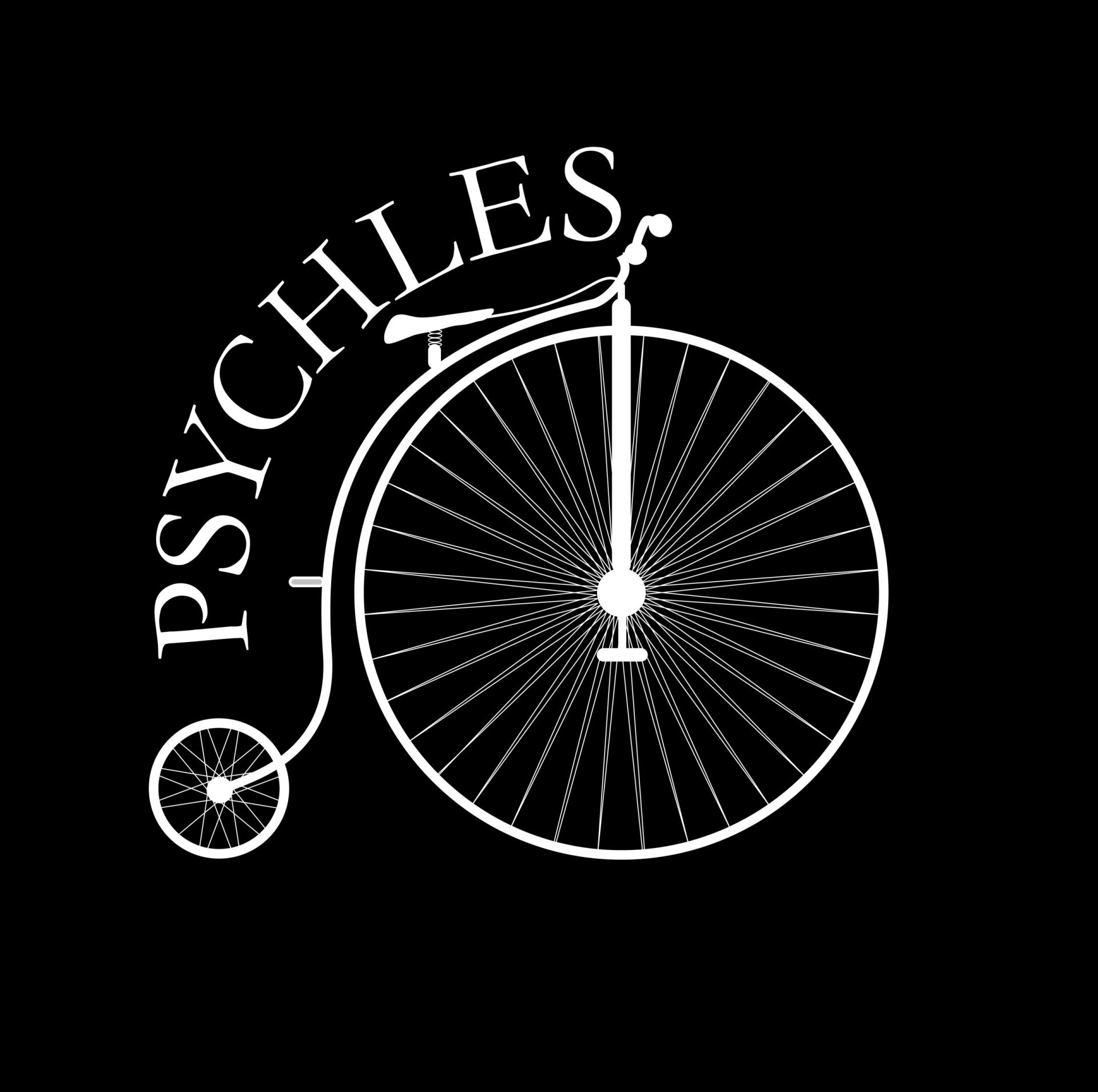Why Do We Overthink And Why Does It Cunningly Trap Us?
Unraveling the Cognitive Loops That Trap Us The Neuroscience, Psychology, and Cultural Roots of Mental Overload
Why Do We Overthink?
Overthinking is not simply a bad habit – it’s a complex cognitive pattern rooted in biology, psychology, and culture. While often dismissed as indecision or anxiety, overthinking reflects deeper mechanisms of memory, threat detection, and emotional regulation. It can feel like a mental spiral – looping thoughts that resist resolution and amplify stress. Whether you’re a chronic overthinker or simply curious about the phenomenon, this illumination the invisible systems behind the noise.
Invisible Systems Trap US
The Brain’s Default Mode Network
The Default Mode Network (DMN) is a set of brain regions active during rest and introspection – including the medial prefrontal cortex, posterior cingulate cortex, and angular gyrus. It’s responsible for self-referential thinking – imagining the future, revisiting the past, and evaluating social scenarios. Overthinking often activates the DMN excessively – creating loops of internal dialogue that resist external interruption. Studies using fMRI show that people prone to rumination have heightened DMN activity even during tasks requiring focus. This suggests that overthinking is not laziness – it’s a hyperactive internal simulation system. The DMN is evolutionarily useful – it helps us plan, reflect, and empathize – but when unregulated, it becomes a source of distress.
Meditation and mindfulness reduce DMN activity – allowing the brain to shift toward present-moment awareness. Overthinking is not a failure of willpower – it’s a neurological imbalance between introspection and action. Understanding the DMN helps us see overthinking as a brain state – not a personality flaw.

Emotional Encoding Complex Cognitive Pattern
Memory and Emotional Encoding
Overthinking often involves replaying emotionally charged memories – especially those linked to regret, embarrassment, or fear. The hippocampus encodes memories – while the amygdala tags them with emotional intensity. When these systems interact repeatedly, they create vivid mental replays that feel urgent and unresolved. People with high emotional sensitivity tend to encode memories more deeply – making them more susceptible to rumination. This is not weakness – it’s a heightened capacity for emotional learning.
Overthinking is often triggered by unresolved emotional experiences – not abstract ideas. The brain reactivates these memories in an attempt to resolve them – but without new input, the loop continues. Emotional encoding is adaptive – it helps us learn from mistakes – but it can also trap us in cycles of self-blame. Therapy and journaling help reframe these memories – reducing their emotional charge. Overthinking is often a symptom of emotional memory overload – not poor decision-making.
Overthinking Invisible Systems
Anxiety and Threat Detection
The brain’s threat detection system – centered in the amygdala and prefrontal cortex – is designed to anticipate danger. Overthinking is often a form of anticipatory anxiety – trying to prevent future harm by mentally rehearsing scenarios. This system evolved to protect us – but in modern life, it often misfires. Social rejection, career uncertainty, and health fears activate the same neural pathways as physical threats.
The brain cannot easily distinguish between real and imagined danger – so it reacts to thoughts as if they were events. Overthinking is a cognitive attempt to gain control over uncertainty – but it rarely succeeds. Chronic anxiety amplifies this pattern – making the brain hypervigilant and resistant to rest. Cognitive Behavioral Therapy (CBT) targets these thought loops – helping people reframe perceived threats. Overthinking is not irrational – it’s a miscalibrated survival mechanism. Understanding its roots in threat detection helps us respond with compassion – not frustration.
Perfectionism and Control
Perfectionism is a major driver of overthinking – rooted in the belief that mistakes are unacceptable. This mindset creates pressure to analyze every decision – often beyond what’s necessary. The desire for control leads to mental micromanagement – rehearsing conversations, predicting outcomes, and second-guessing choices. Perfectionists often equate worth with performance – making every decision feel high-stakes. This creates a feedback loop – where fear of error leads to paralysis. Overthinking becomes a strategy to avoid imperfection – but it rarely delivers clarity. Studies show that perfectionism correlates with increased rumination and decreased well-being. Letting go of control is not easy – but it’s essential for mental freedom. Overthinking thrives in environments of rigid self-expectation. Addressing perfectionism requires redefining success – not just reducing thought volume.

Social Conditioning and Comparison
Modern culture encourages constant comparison – through social media, advertising, and performance metrics. This creates a mental environment of evaluation – where self-worth is tied to external validation. Overthinking often involves comparing oneself to others – replaying interactions, analyzing impressions, and fearing judgment. These patterns are socially reinforced – not just personally chosen. The brain’s mirror neuron system makes us sensitive to others’ emotions and behaviors – amplifying social rumination. Comparison is not inherently harmful – but when tied to identity, it becomes corrosive. Overthinking is often a symptom of cultural pressure – not personal failure. Reducing comparison requires conscious disengagement from external metrics. Social conditioning shapes our thought patterns – often without our awareness. Overthinking is a cultural symptom as much as a psychological one.
Decision Fatigue and Cognitive Load
Every decision requires mental energy – and the brain has limited cognitive resources. Overthinking often emerges when decision fatigue sets in – making even small choices feel overwhelming. The prefrontal cortex handles decision-making – but it tires with overuse. In high-stakes or high-volume environments, the brain struggles to prioritize – leading to analysis paralysis. Overthinkers often revisit decisions repeatedly – trying to find the “perfect” answer. This drains energy and reduces clarity. Simplifying routines and reducing options can help preserve cognitive bandwidth. Overthinking is not a sign of indecisiveness – it’s a symptom of cognitive overload. Decision fatigue affects everyone – but chronic overthinkers feel it more intensely. Managing cognitive load is essential for mental clarity.
Sleep and Circadian Disruption
Sleep deprivation amplifies overthinking – by impairing emotional regulation and cognitive control. The brain’s glymphatic system clears waste during sleep – including neurotoxins linked to stress. Poor sleep disrupts the balance between the amygdala and prefrontal cortex – making emotional thoughts harder to regulate. Overthinkers often struggle with insomnia – creating a vicious cycle of mental hyperactivity and exhaustion.
Circadian rhythms influence hormone levels – including cortisol and melatonin – which affect mood and thought patterns. Disrupted sleep makes the brain more reactive and less resilient. Overthinking at night is common – due to reduced distractions and increased introspection. Sleep hygiene is not just about rest – it’s about mental stability. Addressing sleep issues can dramatically reduce overthinking. The brain needs rest to reset its emotional and cognitive systems.
Trauma and Hypervigilance
Trauma reshapes the brain’s threat detection system – making it hypersensitive to perceived danger. Overthinking is often a form of hypervigilance – scanning for signs of harm or betrayal. This is not irrational – it’s a learned survival strategy. The brain encodes traumatic memories with high emotional intensity – making them difficult to suppress. Overthinkers with trauma histories often replay scenarios to regain a sense of control. This pattern is exhausting – but deeply rooted in neurobiology. Healing trauma requires safety, validation, and new emotional experiences. Overthinking is not weakness – it’s a signal of unresolved pain. Trauma-informed therapy helps rewire these patterns. Understanding the link between trauma and overthinking is essential for compassionate support.

Dopamine and Reward Prediction
The brain’s dopamine system predicts rewards – and adjusts behavior to maximize outcomes. Overthinking often involves predicting future scenarios – trying to optimize decisions for the best result. This activates the striatum and prefrontal cortex – regions involved in planning and reward evaluation. When outcomes are uncertain, the brain increases mental simulation to reduce risk. This is adaptive – but when overused, it creates stress. Dopamine drives curiosity and motivation – but also fuels obsessive thinking. Overthinkers often seek certainty and control – driven by dopamine-based reward prediction. This system is not broken – it’s overactive. Mindfulness and present-moment focus reduce dopamine-driven rumination. Overthinking is a side effect of a powerful prediction engine. Understanding dopamine helps us see the logic behind the loops.
Self-Identity and Narrative Construction
Humans construct identity through narrative – linking past, present, and future into coherent stories. Overthinking often involves editing these narratives – trying to make sense of choices, mistakes, and relationships. The medial prefrontal cortex helps integrate personal meaning – while the DMN supports autobiographical memory. When identity feels unstable, the brain increases narrative construction – leading to rumination. This is not vanity – it’s a search for coherence. Overthinkers often struggle with self-definition – revisiting events to clarify who they are. This process is exhausting but deeply human. Therapy and storytelling help reshape identity narratives. Overthinking is often a symptom of identity uncertainty. Understanding narrative construction helps us support mental integration.
Cultural Expectations and Productivity
Western culture equates worth with productivity – creating pressure to constantly evaluate performance. Overthinking often emerges from this pressure – analyzing whether one is doing enough, achieving enough, or being enough. This mindset creates internal surveillance – where rest feels guilty and action feels mandatory. The brain internalizes these expectations – forming neural pathways that associate stillness with failure. Overthinkers often feel compelled to justify every moment – mentally rehearsing tasks even during downtime.
This is not ambition – it’s a conditioned response to cultural metrics. Productivity culture rewards visible output – but neglects invisible cognitive labor. Overthinking is often invisible – yet mentally exhausting. Breaking this pattern requires redefining value beyond output. Cultures that emphasize balance and reflection show lower rates of chronic rumination. Overthinking is not just personal – it’s a reflection of societal values.
Emotional Regulation and Self-Talk
The way we talk to ourselves shapes our emotional landscape – influencing how we process stress and uncertainty. Overthinking often involves harsh self-talk – criticizing decisions, doubting intentions, and amplifying fears. This internal dialogue activates the same stress pathways as external conflict. The prefrontal cortex attempts to regulate emotion – but negative self-talk overwhelms its capacity. Overthinkers often struggle with emotional regulation – not because they lack discipline, but because their inner voice is adversarial.
Self-compassion practices help rewire this dialogue – reducing the intensity of rumination. Emotional regulation is not suppression – it’s the ability to respond flexibly to internal states. Overthinking reflects a rigid emotional response system – where thoughts become threats. Changing self-talk changes brain chemistry – reducing cortisol and increasing resilience. Overthinking is often a symptom of emotional dysregulation – not intellectual excess.
Neurodivergence and Cognitive Style
Some individuals experience overthinking as part of their neurodivergent profile – including ADHD, autism, and OCD. These conditions involve unique cognitive styles – such as hyperfocus, pattern recognition, and sensory sensitivity. Overthinking in this context is not a flaw – it’s a feature of a different neural architecture.
For example, people with ADHD may overthink due to difficulty with task initiation and emotional regulation. Autistic individuals may ruminate on social interactions due to heightened pattern awareness and difficulty with ambiguity. OCD involves intrusive thoughts and compulsive mental loops – often mistaken for simple overthinking. Recognizing neurodivergence helps reframe rumination as a cognitive trait – not a moral failing. Support strategies must be tailored to individual needs – not generalized advice. Overthinking in neurodivergent minds often reflects deep processing – not indecision. Understanding cognitive diversity is essential for compassionate support.
Technology and Mental Fragmentation
Digital environments fragment attention – creating constant interruptions and reducing deep focus. Overthinking thrives in fragmented minds – where thoughts are interrupted but not resolved. Notifications, multitasking, and algorithmic content create mental noise – making it harder to complete cognitive loops. The brain’s working memory becomes overloaded – leading to partial processing and repeated revisiting. Overthinkers often struggle with digital boundaries – checking, rechecking, and mentally rehearsing online interactions. This is not addiction – it’s a response to cognitive fragmentation. Technology amplifies overthinking by reducing closure and increasing stimulation. Digital detoxes and focused work periods help restore cognitive integrity. Overthinking is not caused by technology alone – but it’s often sustained by it. Mental clarity requires intentional design of digital environments.

Rumination vs. Reflection
Not all deep thinking is harmful – reflection is essential for learning and growth. The difference lies in intention and outcome. Reflection involves curiosity, insight, and emotional integration. Rumination involves repetition, judgment, and emotional stagnation. Overthinking is rumination – not reflection. The brain’s reward system distinguishes between productive and unproductive thought – but only when awareness is present. Overthinkers often confuse rumination with problem-solving – leading to prolonged mental loops. Reflection leads to resolution – rumination leads to exhaustion. Cultivating reflective practices helps redirect mental energy. Journaling, dialogue, and creative expression support reflection. Overthinking is a misuse of cognitive depth – not a lack of intelligence. Learning to distinguish rumination from reflection is a key step toward mental freedom.
Interrupting the Loop
Overthinking is sustained by cognitive loops – repeated activation of the same neural pathways. Interrupting these loops requires novelty, embodiment, and emotional safety. Novelty introduces new stimuli – breaking the pattern. Embodiment shifts attention from thought to sensation – grounding the mind in the present. Emotional safety reduces threat perception – allowing the brain to release unresolved loops. Techniques like breathwork, movement, and sensory engagement help interrupt rumination. These are not distractions – they are neurological resets. Overthinking cannot be solved by thinking harder – it must be interrupted. The brain needs new input to exit old loops. Interrupting overthinking is not avoidance – it’s strategic redirection. Understanding the mechanics of cognitive loops empowers change.
Conclusion
Overthinking is not a character flaw – it’s a complex interplay of neural systems, emotional patterns, and cultural conditioning. It reflects the brain’s attempt to resolve uncertainty, protect identity, and process emotion. While exhausting, it’s also deeply human. The challenge is not to eliminate thought – but to guide it toward integration and clarity. Overthinking thrives in environments of fear, fragmentation, and perfectionism. It recedes in spaces of safety, embodiment, and reflection. Understanding its roots allows us to respond with compassion and strategy – not shame. This post has mapped the architecture of overthinking – from brain networks to social norms. The goal is not control – but awareness. With insight comes choice – and with choice, freedom.
Join the Discussion
Have you noticed patterns in your own overthinking – specific triggers, loops, or emotional themes? What strategies have helped you interrupt or reframe these spirals? Why do you overthink? Why do we overthing in generals and trap us in this complex cognitive pattern?
#CognitiveLoops #EmotionalResonance #NeurobiologyOfThought #MentalClarity #OverthinkingExplained #SelfCompassion #MindArchitecture #TraumaAndThought #CulturalConditioning #NarrativeHealing #DigitalMindfulness #IdentityAndRumination #ReflectionNotRumination #InterruptTheLoop #SymbolicDepth








3 Comments